Sarah is a volcanologist hailing from Western Australia. After a brief career in gold mining and exploration, she moved to Iceland to complete her MSc degree focussing on the vesicularity of tephra from rootless cones. At present, Sarah is working on her PhD candidature in New Zealand looking into the sedimentation and plume dynamics of Supervolcanic eruptions
I grew up in a small town in Western Australia, called Port Denison, approximately 365km north of Perth. In Western Australia, the geology is generally ancient and we tend to lean more toward the economical or resource side of study to eventually end up in mining. I, however, had decided at the age of 14 that I was going to be a volcanologist, following a captivating high school class about volcanoes. Of course, this wasn’t a straightforward path.

I completed my Bachelor of Science (Geology) at the University of Western Australia in 2012 and did what all good West Australian do ─ head straight to work in the mining sector. I started in exploration geology, predominantly in gold, with a little bit of open pit and underground mining mixed in ─ this enabled me to develop a solid base of field working abilities. After a few years of work, I decided that it was time to chase my dream of becoming a volcanologist. This took me to Iceland where I completed my MSc thesis titled: Tephra from Primary and Rootless Cones from the 1.9 ka Nesjahraun Eruption, Þingvellir, SW Iceland: A Comparison. I spent three years in Iceland working on my MSc, attended research and industry conferences in Finland and the US, and indulged my passion with summer employment at the University of Iceland as a research assistant and lava-tube cave guide at Víðgelmir. It was an experience of a lifetime.

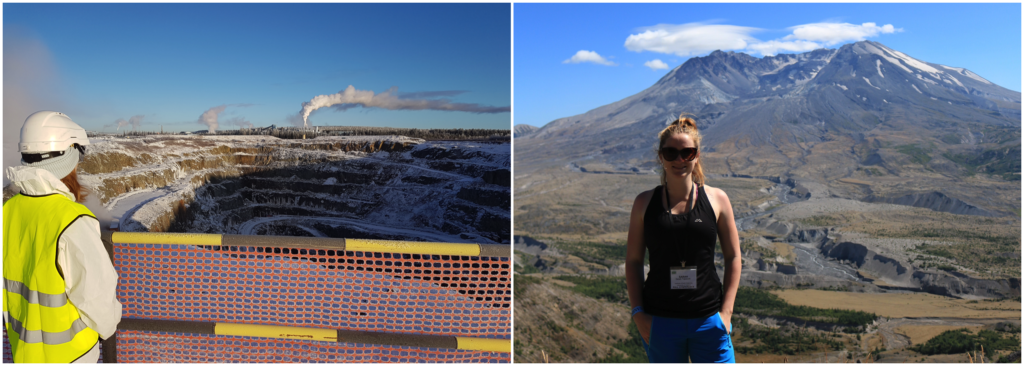
What is Tephra?
One of the first classes I took in Iceland was for a course called ‘Explosive Volcanology’. It was exactly the sort of thing I was interested in pursuing. Of course, I had considered that the only lessons in volcanology I had ever taken were 2 weeks of basic classes during my Bachelor’s. Academia in Western Australia doesn’t focus intently on volcanology, given that most of our volcanoes are long dead and eroded. They tend to focus more on ore deposits and metamorphic geology. That being said, I didn’t realize how much knowledge I was lacking until the class began and the lecturer started talking about ‘tephra’. Everyone else in the class seemed to follow along as though what he was talking about was the most obvious thing on Earth. I, however, seemed to be the only person that had not a single clue as to what tephra was. So, without wanting to look too obvious, I leaned over to the person sitting closest to me and asked, “What’s tephra?”. Turns out, tephra was as common to volcanologists as social media is to millennials. The Google definition of tephra is literally: “Rock fragments and particles ejected by a volcanic eruption”. Since that day, my closest research companion has been exactly that – tephra.
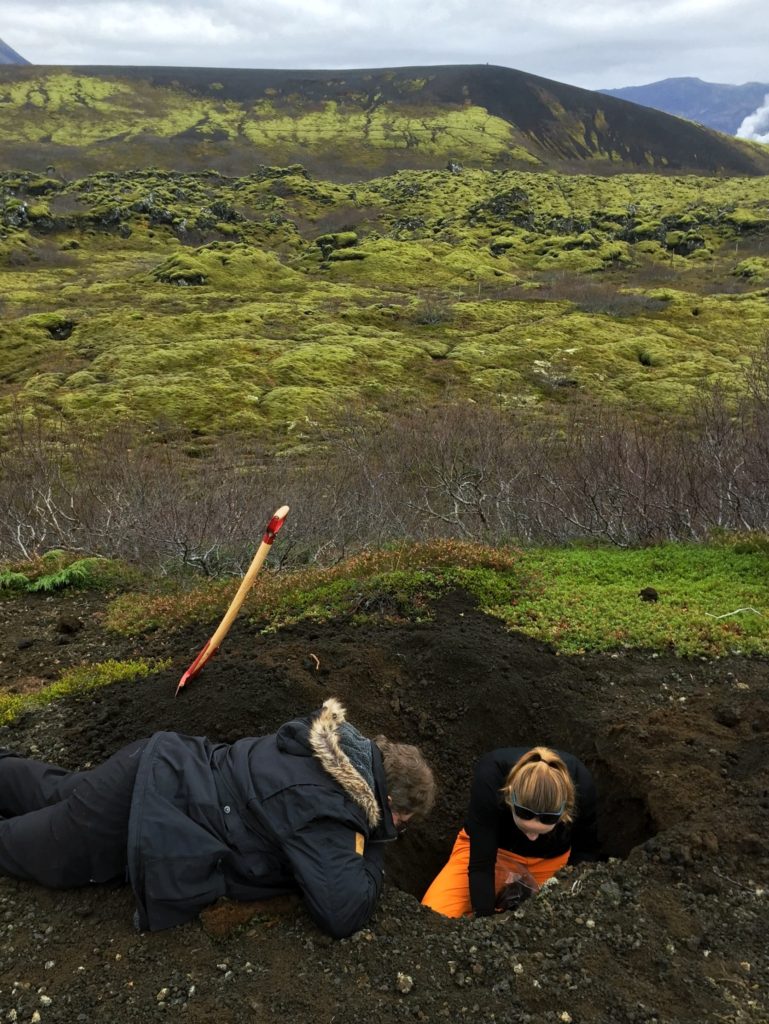
Chasing Supervolcanoes in New Zealand
In recent times, stories about supervolcanoes have been flooding the media. Typing ‘supervolcano’ into Google News comes up with numerous articles regarding Yellowstone, the destruction of the USA and the extermination of over half the world population. Of course, I’m not going to say eruptions from these volcanoes aren’t dangerous. In fact, one of my PhD supervisors likes to refer to them as “chest-beating, Godzilla vs King Kong on speed” eruptions; BUT I will say that the media has often misunderstood and largely romanticized the threat that they pose. In general, super-eruptions are extremely rare events and although a volcano might earn the term ‘super’, it doesn’t necessarily mean that every eruption coming from it will be of that magnitude. I recommend reading a great article written by Maya Wei-Haas for National Geographic called “How Dangerous are Supervolcanoes? Get the Facts” as it goes into further detail about the modern romanticism of Supervolcanoes.
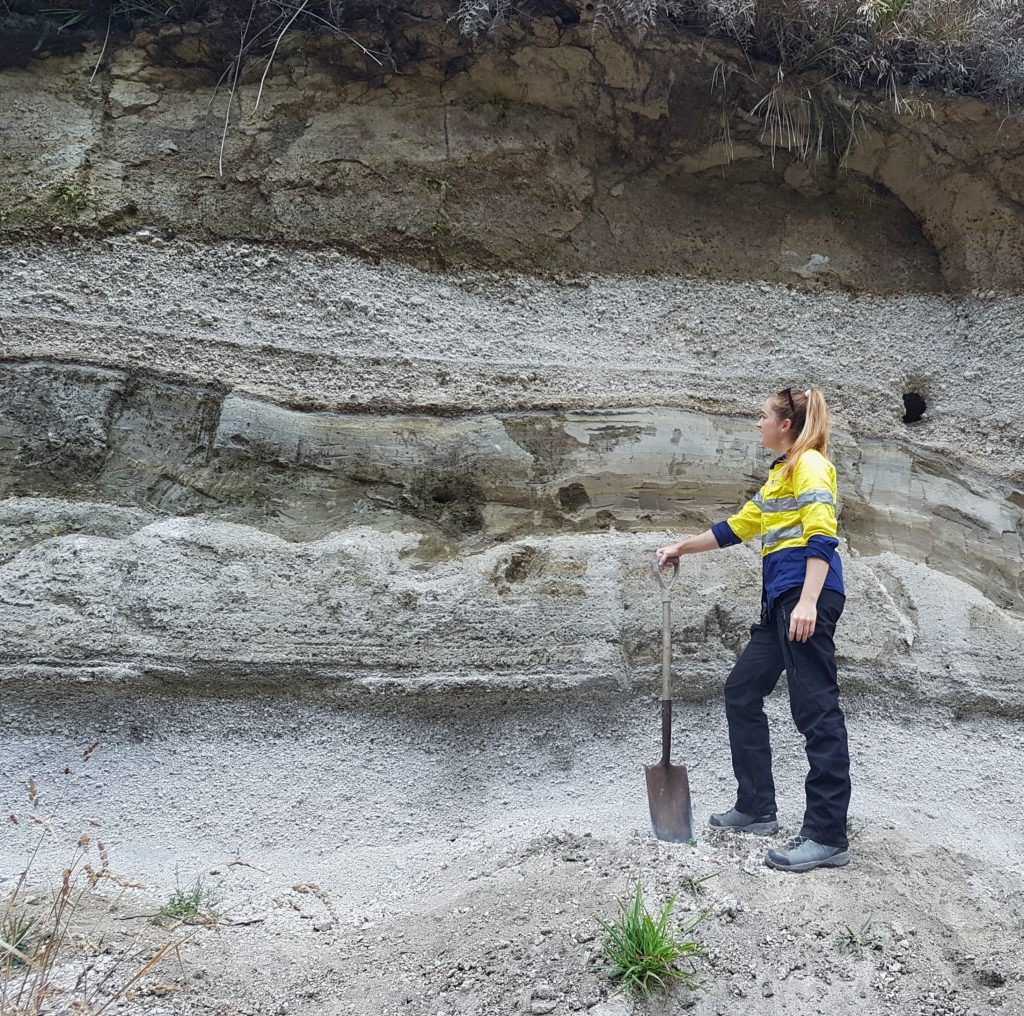
A positive that results from the media hype however, is the increased thirst for knowledge from scientific organisations, political groups and the public. Interest attracts more funding for research, allowing scientists to delve deeper into how these large scale eruptions unfold, the threats they pose, and what we can do to minimise the impact to humanity in the very rare case of another event occurring.
This is where my research comes in. I have recently started a PhD at Massey University as part of a broader project called ECLIPSE (“Eruption or Catastrophe: Learning to Implement Preparedness for future Supervolcano Eruptions”). To do this, numerous research projects undertaken by a team of New Zealand and international scientists and students tackle different aspects of historical eruptions from the Taupo ‘supervolcano’.
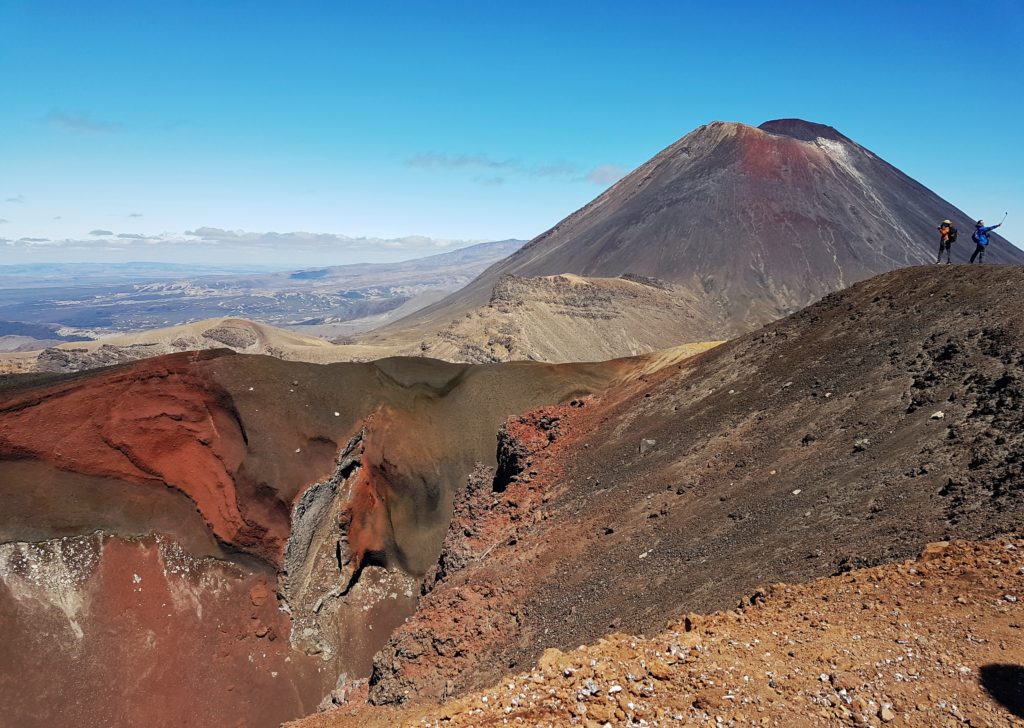
Let’s put aside the term ‘supervolcano’ for now and focus instead on Plinian. This term is derived from Pliny the Younger, a Roman statesman who wrote an account of the events of the 79AD Mt Vesuvius eruption that is most famous for its destruction of Pompeii. His description led to the ‘Plinian’ categorization of those explosive eruptions that generate powerful, convecting volcanic plumes that reach heights of ~35km. They constitute the most powerful natural disasters associated with volcanism on Earth. The plumes produced can be long sustained, injecting ash and volcanic gasses into the stratosphere and are therefore briefly associated with climate change. Often these become partially unsteady and collapse to produce pyroclastic flows that move outward along the ground, destroying most things in their path. It is therefore extremely important to understand the dynamics of these extreme events for hazard decision making and planning at many volcanic sites around the world.
What does my research involve?
The Taupo Volcanic Zone is one of the most frequent producers of large Plinian eruptions globally; the most recent being the 232AD Taupo eruption. This is the focus of my PhD, which looks at the ‘ultra Plinian’, air fall episode of the eruption known as Y5. ‘Ultra Plinian’ is a term first created by George Walker (1980) to describe an eruption plume that exceeds the known boundaries of a Plinian eruption. Y5 has so far been estimated to have a plume that reached 55km into the atmosphere which is significantly larger than that of a max 35km Plinian plume. By analysing this episode, I hope to answer some of the most enigmatic challenges associated with ‘supervolcanic’ eruptions ─ the main question being, how can we ‘read’ the depositional record of a past event to better model and understand eruption dynamics and hazard impacts in the future?
I am only in the beginning stages of my PhD, so I am a long way off answering this question for you. So far, my work has involved a large amount of fieldwork to gather data and samples for further analysis for this purpose. The picture below is an isopach map, which shows the area covered by and the thickness boundaries of the Y5 layer on the northeast of Lake Taupo, North Island of New Zealand, made by Walker (1980) ─ this is my fieldwork area.
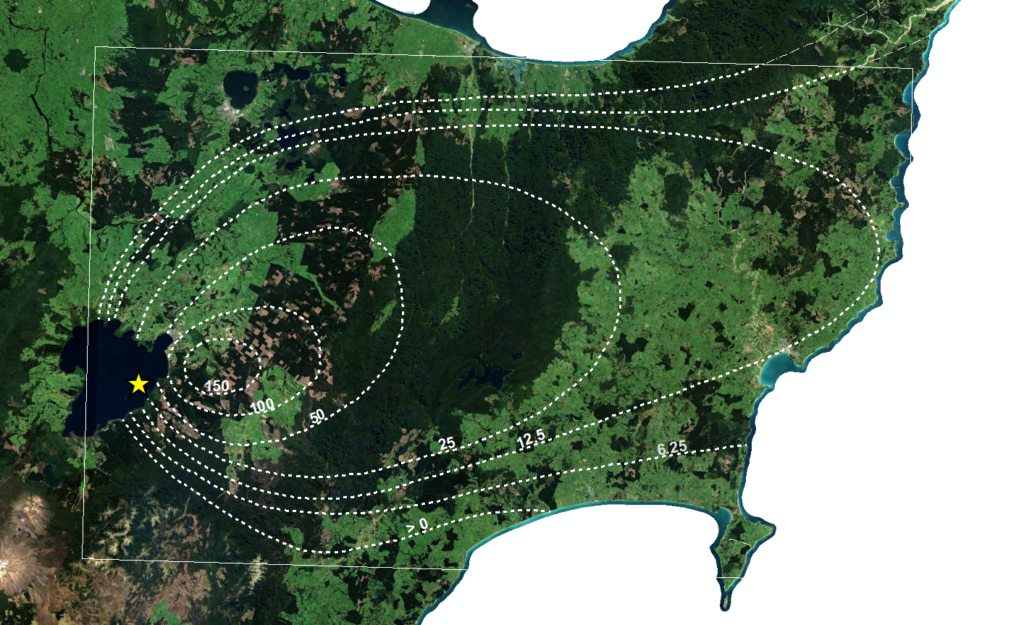
A typical day in the field will involve travelling to an outcrop location, describing and sampling the deposit, and then moving on to the next outcrop. The outcrops are usually located on the side of the road as a road cutting ─ these are the easiest for us to get to. Sometimes they may also be in stream banks, in quarries or even on farmland. If an outcrop is hard to see, it requires ‘cleaning’, which often involves scraping and cutting away the trees, landslips and general mess with a spade. Cleaning the outcrop can also involve a lot of digging as, if the layer is extremely thick, the base of it needs to be seen to get all the information possible. Depending on the outcrop, this could mean spending the most part of the day digging a 3m deep trench. Following this, we take pictures of the outcrops, do a quick sketch and then describe what we see. A description will often cover things such as the thickness of layers within the deposit, where we see different grain sizes and how they change, and the composition of the layer ─ is it predominantly pumice, are there foreign rocks, does it have crystals? We then sample the outcrop, filling bags with the different layers of the deposit to take back to the lab for processing.
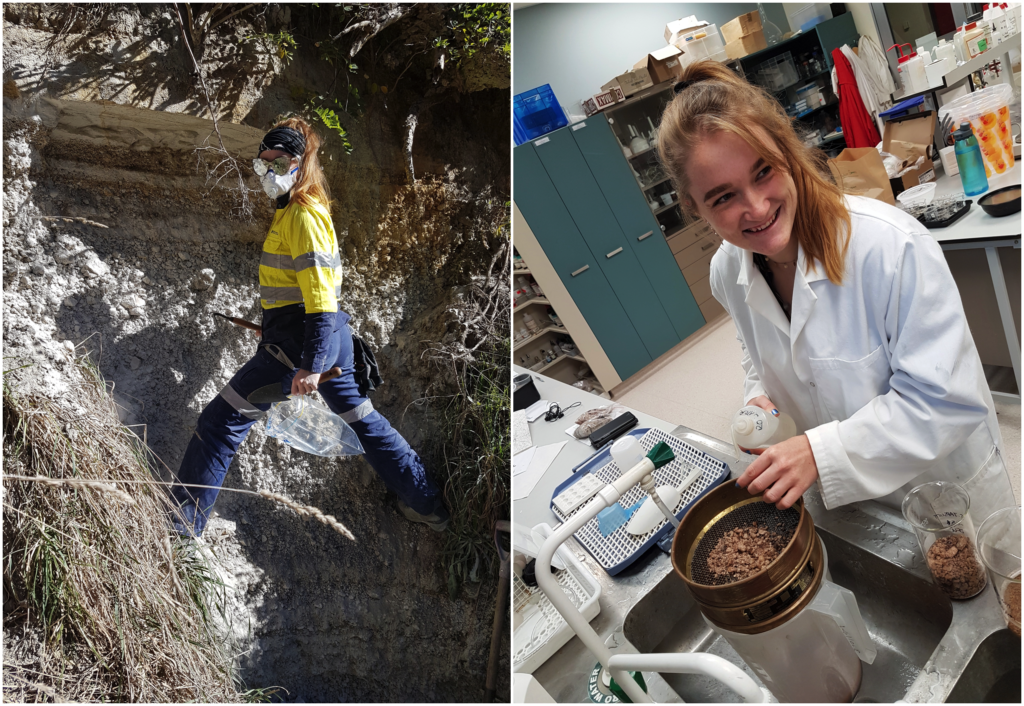
I am currently processing samples using a technique known as wet sieving. This is done to separate the samples into a range of grain size groups which can provide a lot of information regarding the processes that occurred during the eruption, and how this changed with time. To wet sieve, the samples need to be carefully washed through a stack of sieves with different hole sizes ─ largest at the top moving to smaller sizes at the base. Sieving the samples wet is necessary because the Y5 deposit has extremely fine grains, which will easily float in the air and be lost if disturbed ─ losing them may skew the results of the grain size distribution. The pumice in these samples are also extremely delicate, so shaking them violently through sieves to clean them would cause breakage, again skewing results. Once the fine material is cleaned off and washed through, however, the larger grains are carefully sieved while dry to separate them into more grain size groups. The fines are then put through a laser particle analyser to measure their sizes, as they are too small to analyse manually.
I still have the next ~3 years to enjoy the PhD journey and cannot wait to see where it takes me. At the moment, I have A LOT more field work in my sights and hopefully a few international conferences and workshops too! A portion of my PhD research will also involve working with scientists in Pisa, Italy on some numerical models of plume dynamics and sedimentation ─ so be sure to keep up with my Instagram (@adventuresofageologist) to see how the adventure unfolds!
National Geographic article: https://www.nationalgeographic.com/science/earth/reference/supervolcano-yellowstone/
Walker, G.P.L. (1980). The Taupo pumice: Product of the most powerful known (ultraplinian) eruption? Journal of Volcanology and Geothermal Research, 8. pg 69-94. Doi:10.1016/0377-0273(80)90008-6.
![]() This work is licensed under a Creative Commons Attribution-NonCommercial-ShareAlike 4.0 International License.
This work is licensed under a Creative Commons Attribution-NonCommercial-ShareAlike 4.0 International License.
